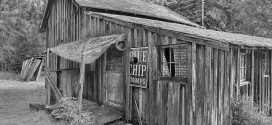Put five of the nation’s top housing economists together on a panel and it’s unlikely they will agree on the big issues facing residential real estate, but at a June 12 panel at this year’s spring conference of the National Association of Real Estate Editors in Houston, they did. Unfortunately, their consensus was not good news for anyone who makes a living from residential real estate transactions.
Lawrence Yun, chief economist of the National Association of Realtors, initiated the discussion with a prediction that rising mortgage rates will further reduce today’s right inventory because they will be a disincentive to sell.
Noting that the multi-year recovering is now “moving sideways,” he suggested that as the refinancing boom winds down, two thirds or more of the nation’s homeowners will either have loans with rates below the current 4.5 percent on a 30-year fixed rate loan, or have no mortgage at all.
CoreLogic’s Mark Fleming picked up where Yun left off, noting that part of today’s chronic inventory shortfall can be attributed to a lingering “shadow inventory” of two million foreclosures that are still being processed, largely in judicial states.
Like Yun, Fleming sees inventories getting even tighter in the future as the lock-out effect created by refinancings and coming rate hikes will be a disincentive for owners to sell at any point, keeping a huge volume of homes off the market. Among the shrinking number of owners that haven’t financed, many are under equitied or face other problems with getting a loan—problems that may keep them from selling as well.
“That’s bad news for real estate agents; that’s bad news for mortgage lenders” and “for anybody who participates in the turnover of housing,” Fleming said.
Stan Humphries, Zillow’s chief economist, agreed. “As mortgage rates get higher over the next few years, this is going to have a chilling impact on existing-home sales,” Humphries said.
For more than four decades, Humphries said, mortgage rates fell by an average of 4 percent every five years, serving as a tailwind to home sales. “However, if mortgage rates rise to 5 percent next year, the lock-in effect on buyers would push down home sales by 3 percent if all other forces affecting the market were held equal,” Humphries said. “And if they rise to 6 percent, the lock-in effect would drive sales down by 11 percent.”
Other economists speaking at the conference did not see new homes filling in the inventory gaps any time soon.. Resurrecting the home building business may take a while, says David Crowe, chief economist of the National Association of Home Builders. It’s still difficult for builders to get financing. Building materials manufacturers have shut down. And land developers have not been creating many new communities and home lots. So even though the demand for new homes is rising, creating new homes for consumers is a slow process.
Brad Hunter, chief economist for home-building research firm Metrostudy, foresees a “gradual” shift to a greater production pace starting within the next 18 to 24 months. For now, he says, large, public builders are pushing for both high prices and greater production volumes. It doesn’t appear that the latter is panning out in any significant way.
Founded in 1929, NAREE has more than 650 members nationwide. The association meets in different US cities three times per year. Active members cover real estate, and home and design for the general circulation and trade press. Stories run the gamut from affordable housing, home mortgage finance, home building, home design, and housing policy to urban planning, retail, hospitality and commercial investments.
 RealEstateEconomyWatch.com Insight and Intelligence on Residential Real Estate
RealEstateEconomyWatch.com Insight and Intelligence on Residential Real Estate

One comment
Pingback: Will Locked-in Owners Lock be Locked Out of the Market? | Belair Realty